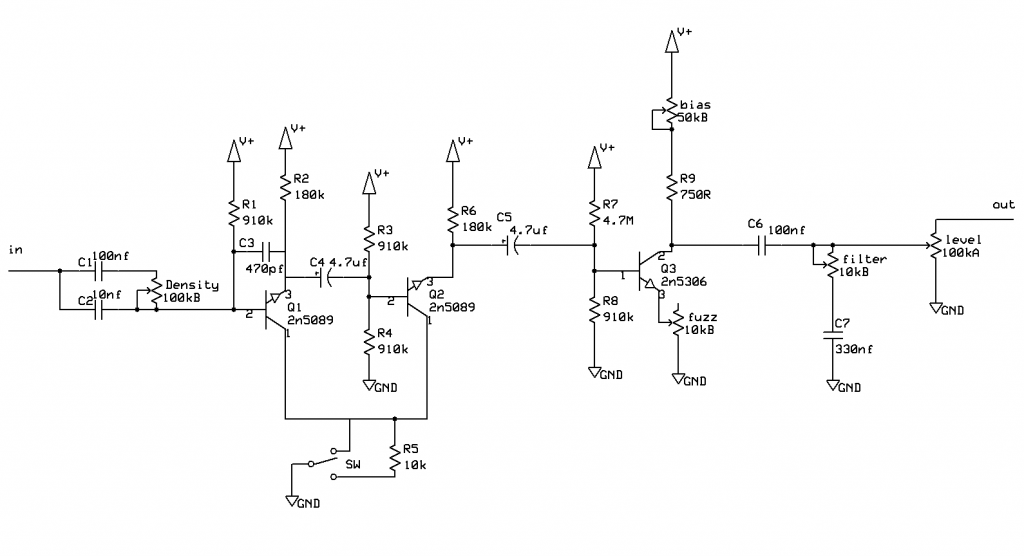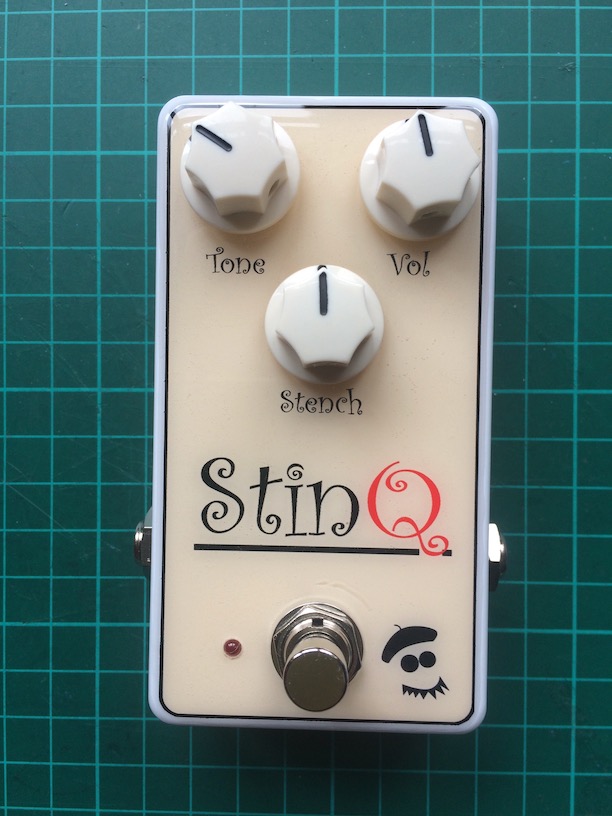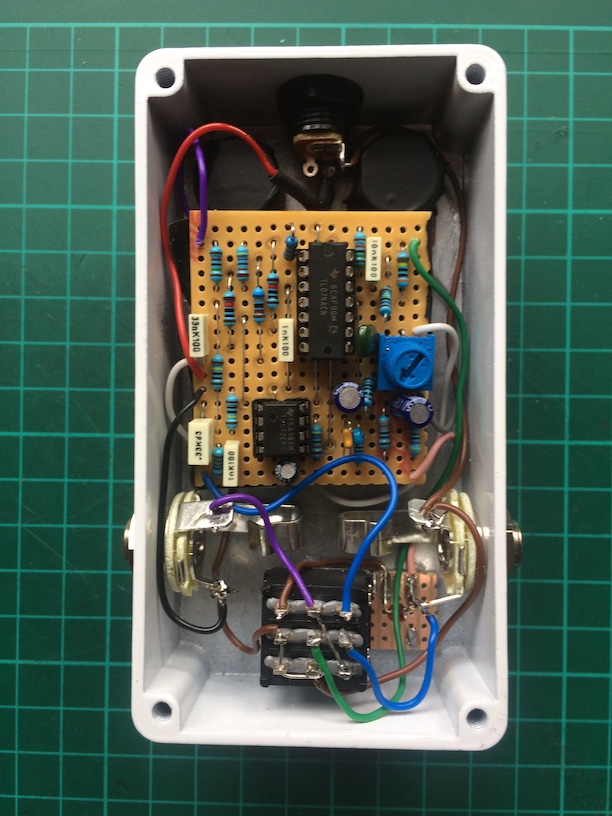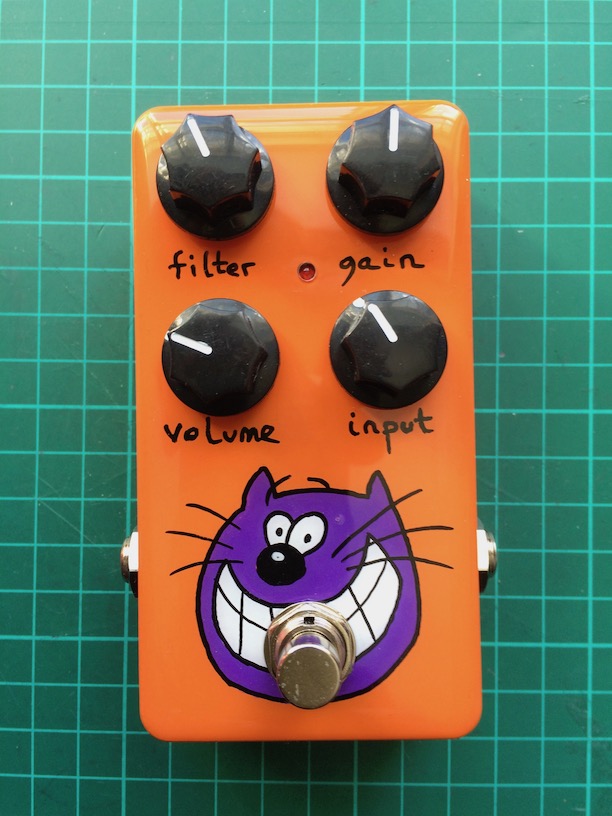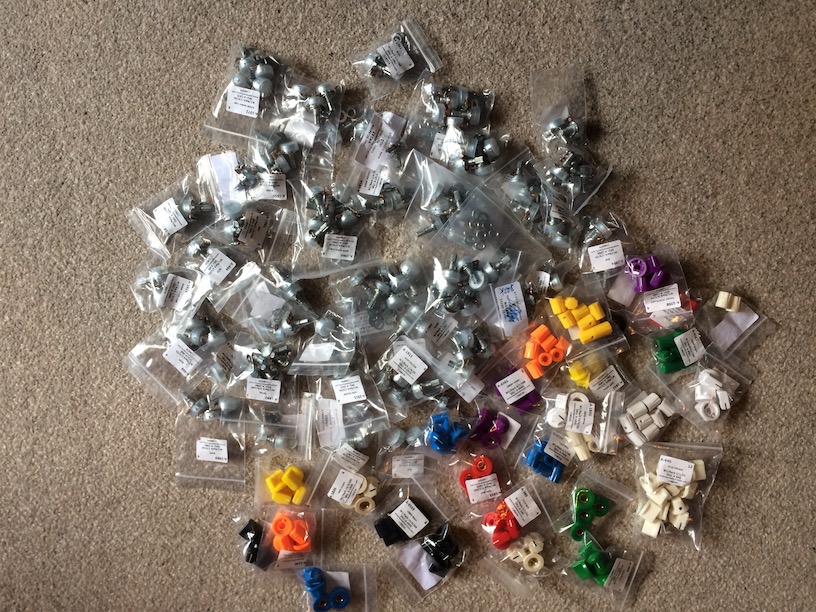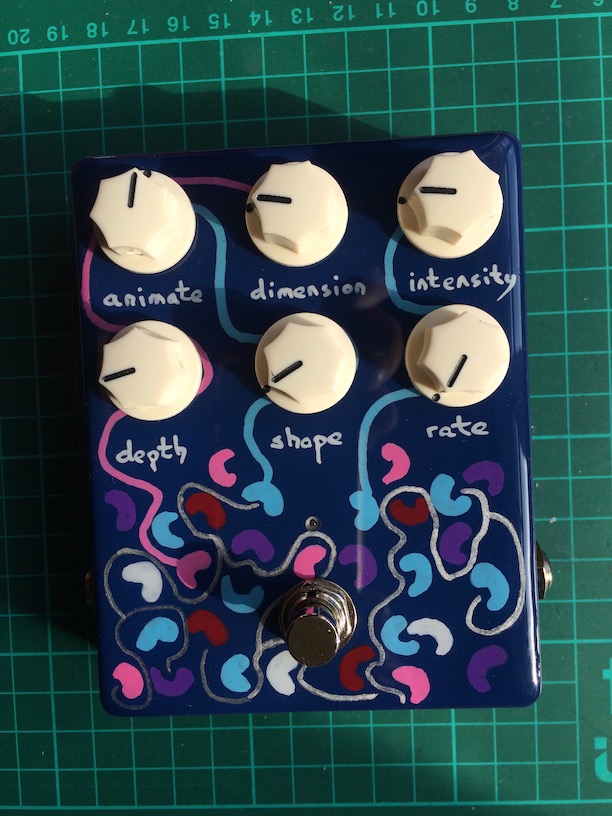I think it’s useful to have the schematic to cross reference and see the theory behind it all. After Googling “Death By Audio Supersonic Fuzz Gun Schematic” I found this:
And I’m going to order the parts. I can get most things from:
Bitsbox – a great place for audio components
CPC – good for general purpose stuff like resistors and capacitors
RS – like CPC, good for general stuff
Tayda – a really great and cheap company in Thailand – they do a 15% discount
code about twice a month – keep a lookout on their Facebook page.
But to be honest, I’ve already stocked up on some resistors and capacitors since it’s cheaper to buy in larger quantities.
Here’s my buying guide:
- Knobs, Potentiometers and Enclosures – from Tayda. Cheap and good quality.
- Stomp switches – https://www.ebay.co.uk/itm/Alpha-Taiwan-3PDT-Footswitch-with-Solder-Lugs-/253111548438?hash=item3aee9fba16
- Resistors – I bought a pack like this one https://www.ebay.co.uk/itm/2600pcs-130-Values-1-4W-Metal-Film-Resistors-Resistance-Assortment-Kit-Set-1-/263532240889?hash=item3d5bbedff9 – and now I top up with 50 packs of the common values like 1k, 10k, 22k etc from CPC.
- Electrolytic Capacitors – I bought 50 or 100 multi-packs from CPC in values of 1uF, 3.3uF, 4.7uF, 10uF, 22uF, 33uF, 47uF, 100uF
- Polyester box film Capacitors – I get these from Bitsbox or eBay. Values range from 1nF to 0.1uF.
- NP0/C0G Capacitors from RS Online – 220pF, 470pF, 100pF, 150pF, 47pF, 22pF, 10pF (more on these later)
- Chips,
Transistors, Diodes usually from Bitsbox or whoever has them. But I buy
these only when I know what pedals I’m going to build. - I compare prices between Bitsbox, CPC, RS Online, and Tayda. And whoever does the best postage deals.
The only tricky component was the 2N5306 transistor which I couldn’t find at CPC, RS, or Bitsbox, but Tayda have some so I ordered a few, at the same time as stocking up on some more enclosures and knobs.
Here’s the plan:
- Collect the various components
- Cut and prepare the vero board
- Make the first connections and add some components
I get the vero board from Bitsbox. I buy it in packs of 5 or so and it looks like this:
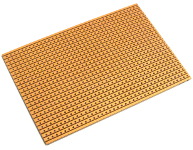
You can also get it on Amazon:


